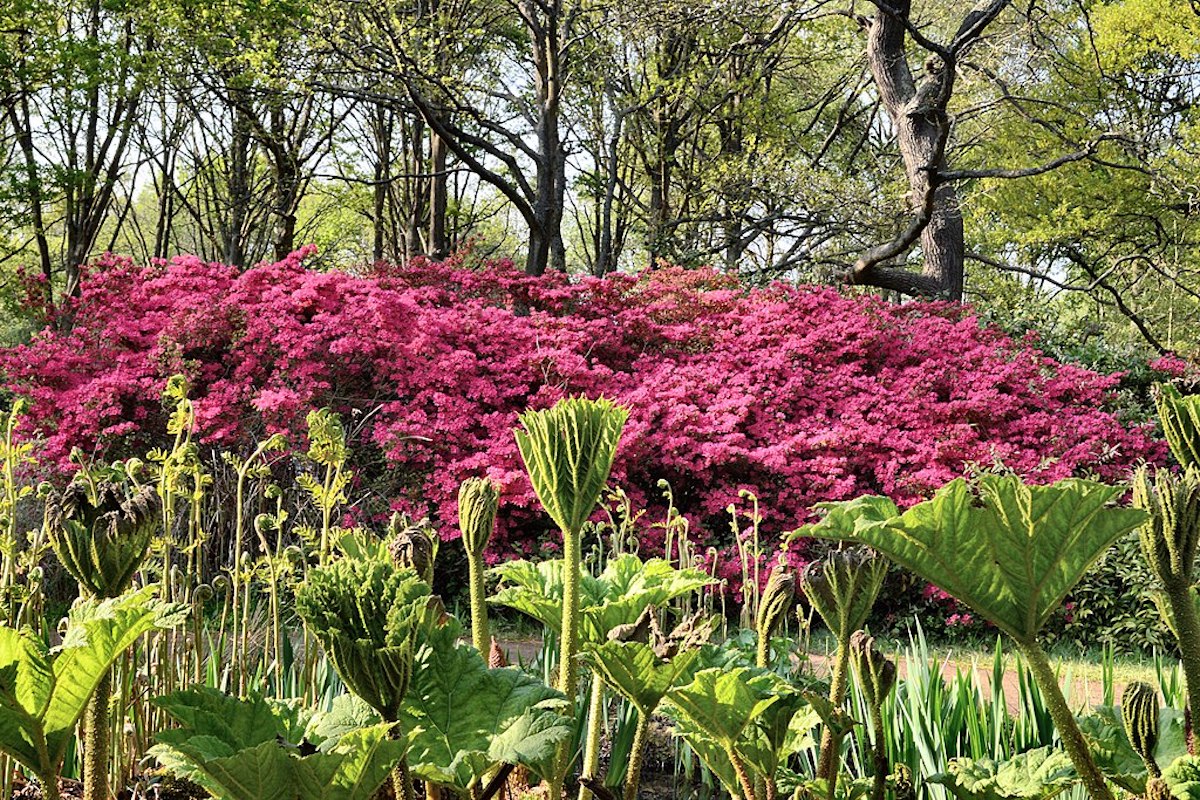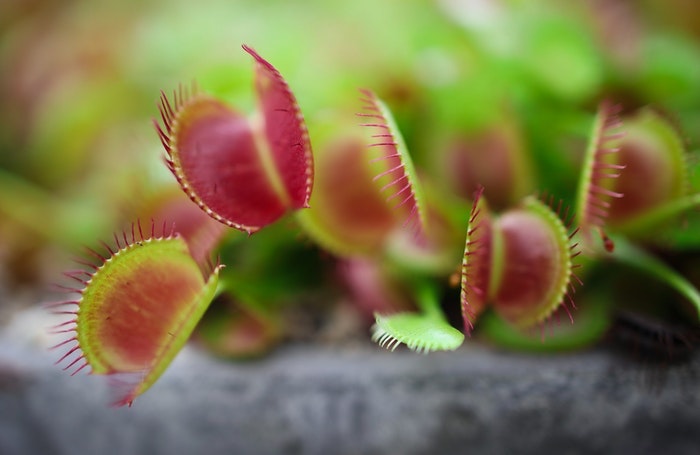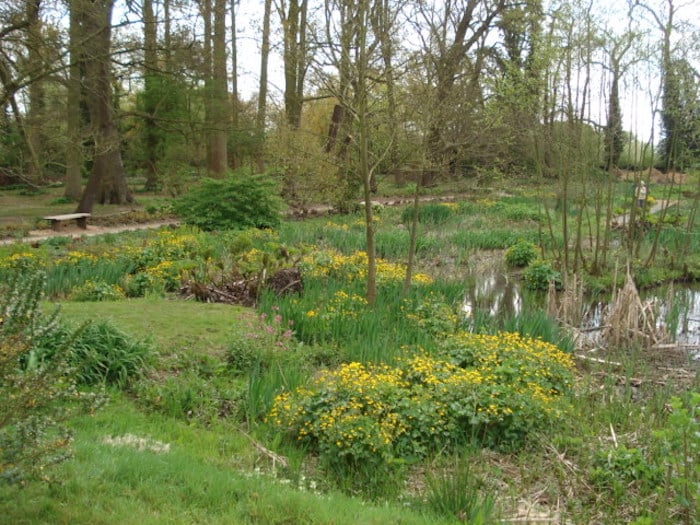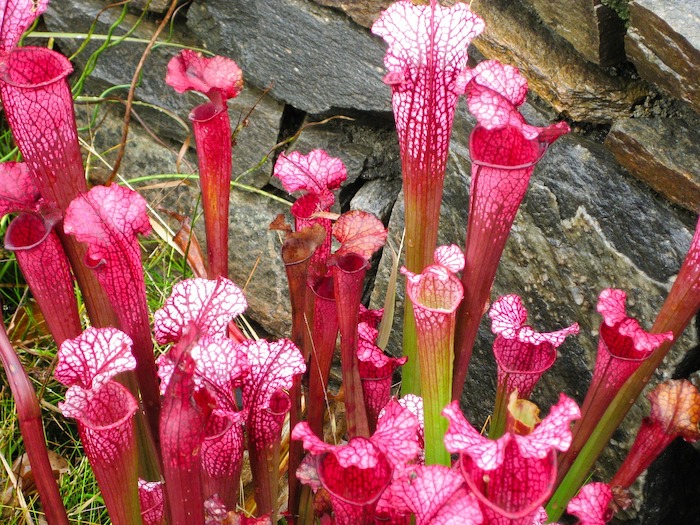
To a small housefly, a bog garden is a deathly, swamp-like jungle. But to gardeners, bog gardens are a fascinating attraction.
If your home doesn’t have a naturally occurring bog, bog gardens can be built right in your backyard, next to your pond, or even in a small container. Building your bog garden can be a rewarding project, and needn’t be complicated. Grab your rubber boots and sunhat, and let’s get started.
Table of Contents
- What is a bog garden?
- What plants are in a bog garden?
- How to create a bog garden
- How to grow a bog garden in a container
- Don’t let maintenance bog you down
- How a landscaping pro can help
What is a Bog Garden?
A bog is a type of wetland that accumulates dead plant material known as peat, which contributes to a bog’s acidity.
A bog garden’s moist, acidic, and nutrient-poor ecosystem is easy to recreate outside your home or in a small, outdoor container. These wet, marshy gardens exist in nature near ponds, streams, or lakes and feature an exciting array of plants, including the Venus flytrap (watch out flies!).
What Plants are in a Bog Garden?

Your bog garden will make a welcoming home for carnivorous plants like pitcher plants, butterworts, and sundews. These plants will thrive in a bog garden’s moist, acidic soil and will always say yes to plenty of water.
While your bog garden can contain a mixture of carnivorous plants, you’ll want to investigate which varieties will bode well in your temperate zone and climate.
How to Create a Bog Garden

Time to put those green thumbs to work. Slap on your sunscreen, wear your favorite gardening attire, and slip on those gardening gloves.
Before establishing your DIY bog garden, you’ll need to find the right place for it.
Sometimes the most neglected area on your property can make the most natural spot to establish your bog garden, such as gutter runoff areas, pond edges, muddy patches, or overflows. These areas often have the right moisture, acidic soil, and water flow to begin growing your bog garden.
No moist areas? Let’s dig
Few gardeners are lucky enough to have these moist areas at their disposal. You’ll likely need to establish your garden in a dry area, and that’s just fine. Wherever you choose to develop your bog garden, make sure it’s in a spot that receives at least six hours of full sunlight a day.
Dig a shallow area where you’d like your bog garden to be. You may make your bog garden as large as you’d like, but the depth must be at least 1 foot deep to ensure the bog does not dry out.
Drainage
Place a pond liner or plastic sheet along the bottom of the excavation. Poke or drill a few holes along the sides of the pond liner or sheet to encourage drainage. While a bog garden does need lots of moisture, going overboard can be harmful.
Inadequate drainage can create stagnant water conditions, which can become a breeding ground for bacteria, pathogens, and disease-carrying mosquitoes. Stagnant water conditions also will prevent your bog garden plants from growing.
Irrigation system
If you are establishing your bog in a dry place, you will want to consider installing either an irrigation system or burying a soaker hose before adding soil back into the depression.
Soil
For your bog garden soil, Mississippi State University Cooperative Extension recommends using an 80% coarse peat moss and 20% sharp sand combination. Fill the hole with this soil mix.
Do not use any of the soil you dug from the ground. Instead, you can use the old soil to raise your garden beds, fill in low spots, or ask local gardeners if they need extra dirt.
Watering
If you can, put your rain barrel to good use and wet the mixture thoroughly with rainwater. It’s best to irrigate your bog garden with distilled water, reverse osmosis water, or rainwater.
Chlorinated tap water can be harmful to your plants. To avoid stagnant water, do not let the level of water rise above the soil. Allow the soil to settle for about a week before planting.
Spruce it up
Sometimes your bog garden may need a little sparkle to make it look just right. Consider installing paver stones or a walkway around your bog garden to create a calming or welcoming atmosphere.
Another decorative option is a border of rocks around your bog garden. If your pond liner is visible, consider patting-down moss on top of the edges to help the pond liner blend into the environment.
Add your plants
After you’ve allowed the soil to settle for one week, you can finally install your chosen plants in the bog garden.
How to Grow a Bog Garden in a Container

Building a container bog is the perfect solution for gardeners who wish to start small. It’s not as large a commitment as a backyard bog garden and is just as rewarding.
The Brooklyn Botanic Garden recommends the following supplies and steps for creating your mini-bog garden.
What you’ll need
- Pond liner: One rigid high-density polyethylene pond liner with no drainage holes. The botanic garden recommends a 9-gallon black liner, 26 inches wide and 7 inches tall.
- A pot: One plastic nursery plant pot with drainage holes. The pot should be about 6 inches tall and 10 inches wide.
- Lava rock: 1.5-quart bag of horticultural lava rock
- Peat moss: 1-cubic-foot bag of sphagnum peat moss
- Sand: 40 to 50-pound bag of horticultural sand or washed play sand
- Sphagnum: 100-cubic-inch bag of fibered sphagnum
Where to start
- To ensure drainage, fill the container with 2 inches of lava rock.
- Place the plastic nursery pot in the center of the pond liner. This pot will remain empty as you fill the container with soil.
- Your soil mix will contain 50% sphagnum peat moss, 30% horticultural sand, and 20% long fiber sphagnum moss. Fill the container with the mixture, except for the flower pot.
- Saturate the soil with water. The mixture should now have a muddy consistency.
- Allow the water and soil to settle for about a week before installing your plants.
- Place your bog garden in an area where it will receive at least six hours of direct sunlight a day.
- Protect your bog garden by scattering pine needles or pine bark on the bog garden’s soil. This light covering can help protect your bog from heavy rain or pests. Pine needles and pine bark are naturally acidic and help maintain the acidity of your bog garden.
- Once the soil has settled after one week, add your plants to the container.
- To water your mini-bog garden, fill the flower pot to the top with water. The holes near the bottom of the pot will slowly drain the water. Let the water level drop to near the bottom before watering again.
Don’t let Maintenance Bog you Down
Bog gardens are generally low maintenance, but you may need to perform upkeep from time to time. Every bog garden’s maintenance requirements are different depending on several factors, including the types of plants you choose or where you planted your bog garden.
Watering
The No. 1 bog garden rule? Never let your bog garden dry out.
If your bog dries out, this can be harmful to your water-loving plants. If your bog garden is by the side of a pond or in an area with regular overflow, dryness may not be a frequent problem. However, if your bog garden is in a dry area of your property, your bog garden’s soil should remain evenly moist, but not soaking wet.
Remember to avoid watering your bog garden with chlorinated water. The best water options for your bog garden are distilled water, reverse osmosis water, or rainwater.
If you find that water is continually flooding your mini-bog garden, drill a few holes in the container’s side an inch below the rim.
Keep in mind that when installing your bog garden in a dry place, you will want to consider an irrigation system that works best for you, such as burying a soaker hose.
Weeds
Most weed types do not survive in a bog garden’s wet conditions. Pesky weeds will sometimes get through though, and you’ll want to pull them right up from your bog garden.
Feeding
Lucky for you, you don’t have to hand-feed your carnivorous plants. These plants will have no problem attracting wondering flies and wasps right to their traps. Your bog garden won’t need much fertilization, either.
Of course, if you are so inclined to drop a housefly in the Venus flytrap’s mouth, by all means.
Winter
If the plants in your bog garden are sensitive to winter temperatures and weather, you can help protect your mini-bog in the winter by bringing it inside and placing it near a window. Ensure the container-bog remains in a cool space where it can experience natural dormancy while protected from the outdoors.
For your backyard bog garden, mulch the surface of the garden to regulate soil temperatures.
How a Landscaping Professional can Help
If creating your bog garden presents challenges, consider calling a landscaping professional near you. A landscaper can help designate a suitable area for your bog garden, build the excavation site, install an irrigation system, or even help you choose the best plants for your bog garden.
A landscape professional also can install any decorative solutions you may want around your bog garden, such as a stone path or stone wall.
If your bog garden needs more maintenance than expected, a professional landscaper or lawn care company can perform routine maintenance solutions.
Main image credit: Isabella Plantation, Gunnera, the bog garden in spring / AndyScott / CC BY-SA 4.0